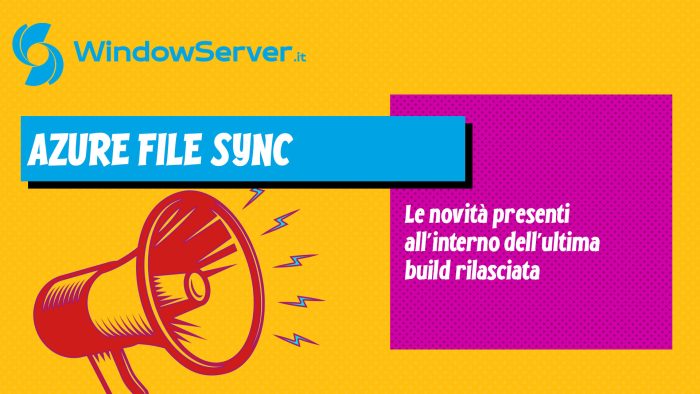Una nuova versione di Azure File Sync agent, arrivato alla versione 16, è in fase di rilascio per tutti i server configurati per l’aggiornamento automatico, mentre a breve sarà disponibile all’interno Microsoft Update e Microsoft Download Center.
Questo articolo contiene le novità rilasciate in questa nuova build:
- Improved Azure File Sync service availability
- Azure File Sync is now a zone-redundant service which means an outage in a zone has limited impact while improving the service resiliency to minimize customer impact. To fully leverage this improvement, configure your storage accounts to use zone-redundant storage (ZRS) or Geo-zone redundant storage (GZRS) replication. To learn more about different redundancy options for your storage accounts, see: Azure Storage redundancy
- Note: Azure File Sync is zone-redundant in all regions that support zones except US Gov Virginia. Azure File Sync will be zone-redundant in these regions in the near future.
- Sync upload performance improvements
- Sync upload performance has improved (performance numbers to be posted in the near future). This improvement will mainly benefit file share migrations (initial upload) and high churn events on the server in which a large number of files need to be uploaded.
- Note: The feature to improve sync upload performance will be enabled and available in all regions over the next two weeks.
- Immediately run server change enumeration to detect files changes that were missed on the server
- Azure File Sync uses the Windows USN journal feature on Windows Server to immediately detect files that were changed and upload them to the Azure file share. If files changed are missed due to journal wrap or other issues, the files will not sync to the Azure file share until the changes are detected. Azure File Sync has a server change enumeration job that runs every 24 hours on the server endpoint path to detect changes that were missed by the USN journal. If you don’t want to wait until the next server change enumeration job runs, you can now use the Invoke-StorageSyncServerChangeDetection PowerShell cmdlet to immediately run server change enumeration on a server endpoint path.
- To immediately run server change enumeration on a server endpoint path, run the following PowerShell commands:
- Import-Module “C:\Program Files\Azure\StorageSyncAgent\StorageSync.Management.ServerCmdlets.dll”
- Invoke-StorageSyncServerChangeDetection -ServerEndpointPath <path>
- Note: By default, the server change enumeration scan will only check the modified timestamp. To perform a deeper check, use the -DeepScan parameter.
- Miscellaneous reliability and telemetry improvements for cloud tiering and sync
Note
- L’update è disponibile per Windows Server 2012 R2, Windows Server 2016, Windows Server 2019 e Windows Server 2022
- La versione dell’agent installata è la 16
Get Started
Azure File Sync Agent v16 Release – January 2023 – Microsoft Support

